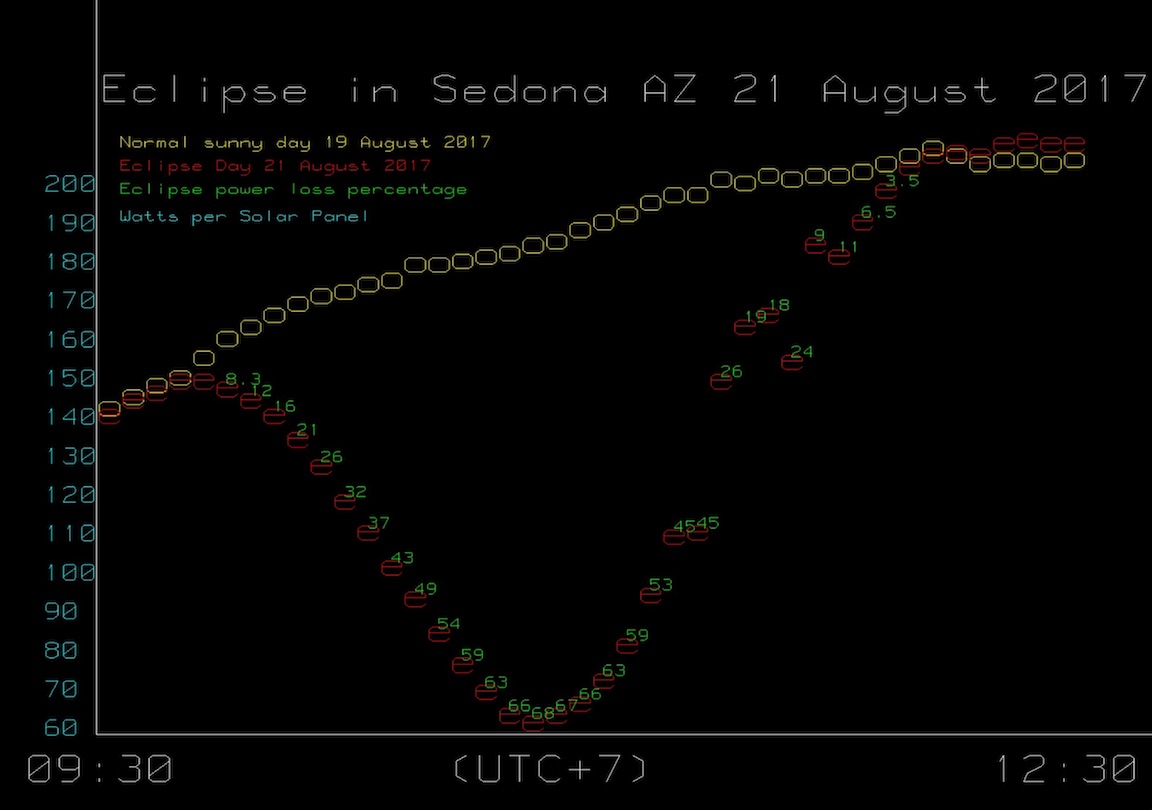Citizen Science
Grazhdanin Nauka
When reading about today's "Great American Eclipse," I was impressed by how often the term "citizen science" was written, usually with the word "opportunity" nearby. But it also made me think of my colleague, Dr. SETI, and other figures from the past, such as Mr. Wizard and Captain Video. Citizen as an honorific I always believed was a sort of revolutionary greeting in Russia, before "Comrade" (tovarishch) came into use. Foolishly, I looked it up:
"In Soviet jails, prisoners have long been addressed as "grazhdanin," or "citizen," a form of address also used by police officers about to make an arrest"
Thank you, Gospodin New York Times.*My "Research"
I realized that I could do an "experiment" to measure the depth, or percentage of totality, of the eclipse, by doing only a little Citizen Arithmetic. Thats because we have a solar power system on the roof, and the system measures the output of each of the solar cells every minute and sends the data to the mother ship, in this case the company that makes the "optimizers" that allow the cells to function when partially obscured. (What obscures the cells? At low sun angles, trees and portions of the roof construction. I also have a lovely tower and beam antenna that occasionally casts a shadow here and there.) The optimizers transmit their data, and it is returned to me in graphical form, with each panel showing its power output by the minute.
Most days in Sedona are sunny, and 19 August, two days before the eclipse was one of them, as was, mostly, eclipse day. There was a bit of obscuration by clouds during the eclipse period, but not during the approach to and recovery from its deepest phase. By comparing the solar cell output for the two days, I created the graph shown below. Since the eclipse began relatively early in the day, you can see that the power increased for its full duration. Without the previous data to compare, it would have been impossible to derive a proper ratio.
Once again, I've proved myself poor at creating suspense in the reader. It's obvious that my measurements showed the percentage of sun blockage at about 68%.

Good job, Citizen Science! But a true scientist can't rest easy with this conclusion. No, he must do an error analysis. I first did a "sanity check" by looking at an eclipse site or two to find out what the prediction was. As near as I could tell from looking at the graphs, we were entitled to about 70%, so 68% is a reasonable answer, if not quite as accurate as one would hope. Even so, the solar cell output is measured to the (presumably) nearest watt, so why not get a little closer? Here's why:
- Laziness. There are a lot of solar cells up there, and I had no convenient way of averaging the output numbers without a lot of Citizen Data Input. So I eyeballed a group of four and mentally computed the mean. I could have been off.
- Looking at the yellow reference curve, you can see it isn't entirely smooth. Perhaps it was slightly low due to minor cloudiness, corrupting the measurement. Other meteorological effects, e.g., a slightly hazy day, might have affected it, too.
- Most interestingly, the temperature variation during the eclipse. The summer sun heats the solar cells and reduces their efficiency. During the eclipse, the cells had an hour to cool off due to the reduced solar heating, so they would have had a slightly higher efficiency at the depth of the eclipse. One or two per cent? Most likely yes!
- And, of course, I could have made a mistake in data entry, or just misread the 70% figure off the reference site graph.
OK, now I'm content that the "experiment" worked correctly and gave the proper result. That's if for "research" for now. I've done my duty.
Jerry Lewis
He died yesterday. Never met him, but I do have a story. Fortunately, I have already told that story, and since it's very short, reading it won't add to the time burden of all the obituaries in today's news.
* No sooner did I write this than I realized the The New York Times is often referred to as The Gray Lady. My apologies, Gospazha New York Times.


